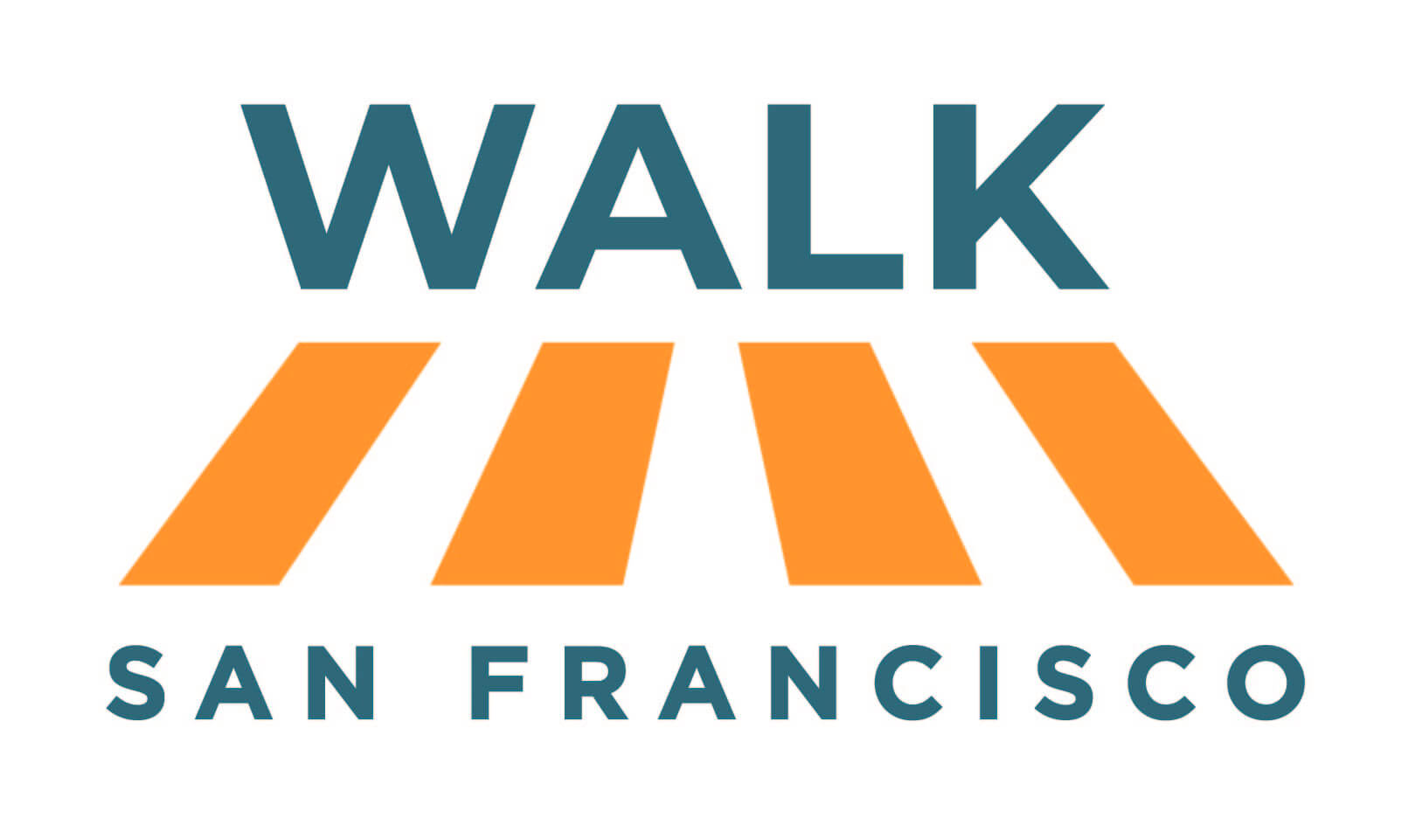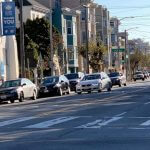The power of a ‘walking school bus’ at Malcolm X Elementary
Alessandra is a first grader at Malcolm X Elementary. She has a big bright smile and beautiful brown eyes. If you ask her what she likes about being part of a “walking school bus,” she has a lot to say.
“My favorite thing is that we get to walk and talk together,” says Alessandra, looking at her friend Sincere, a second grader. “Same,” chimes in Sincere with a smile.
A walking school bus brings together a group of kids who walk a regular route to school together with a supervising adult, kids and families can join in at any point along the way. Walking school buses make it safer and easier for more students to get to school on their own two feet.
Malcolm X Elementary doesn’t have just one walking school bus, but three! Because Walk San Francisco provides trainings on how to start a walking school bus, we wanted to learn how Malcolm X built such a successful program so that we could share their story.
The walking school bus at Malcolm X Elementary was started in September 2019 by Urban Ed Academy, a nonprofit that runs an after-school program at Malcolm X. The director of Urban Ed Academy, Shanyanae Tucker, thought that the walking school buses could be a help with high truancy rates. So they decided to try some different routes that would go by where students with high truancy rates lived and see what participation they could get.
Through trial and error, the leaders of the walking school buses learned a couple things: 1) the sweet spot for a student to be most likely to participate is first grade; and 2) starting earlier in the morning actually makes the experience more fun because students have time to walk without rushing (and have more time to play on the yard before school starts).
Fun is a key ingredient to the walks and their success. Staffon Nichols, who leads one of the walking school buses, definitely makes it fun. Every morning he and the students recite positive affirmations and sing the lyrics of a popular Nas song: “I know I can be what I wanna be if I work hard at it. I’ll be where I wanna be.”
Nichols said students now look forward to the walking school bus, and are disappointed if it’s cancelled because a leader can’t be there that day. The connections built between the leaders and the students is strong. “Students pop out of their doors in the morning armed with questions and ready to share about their own family, home life, and feelings,” says Nichols.
De’Von Maynard urges patience when starting a walking school bus. “It took parents some time – about a month – to get on board and see that the walking school bus was actually something that could help them out and add convenience to their life.”
Now, between 15 to 30 students are picked up in the walking school buses every day. And parents like Kia love it. “Now I have peace of mind that I can make it to work on time and my kids will get to school on time, and safely as well,” says Kia.
“It builds unity amongst not just students but the parents as well, and helps to build strong community bonds outside of school,” says another parent, Valarie.
And back to why and how the routes were created. Whitney Bahati conducts daily attendance at Malcolm X Elementary. “Since the activation of the walking school bus, we have seen a 30% reduction in truancy in the mornings,” says Ms. Bahati.
Learn how to start a walking school bus at your school
There are many more benefits to walking school buses, too. From building more healthy activity into the day for kids, to less traffic and air pollution, it’s a simple but powerful idea. So think about starting one at your school!
Contact Vernon Haney, Family & Schools Coordinator, with questions and to learn more. Walk San Francisco has been part of the Safe Routes to School (SRTS) Partnership since 2014.




